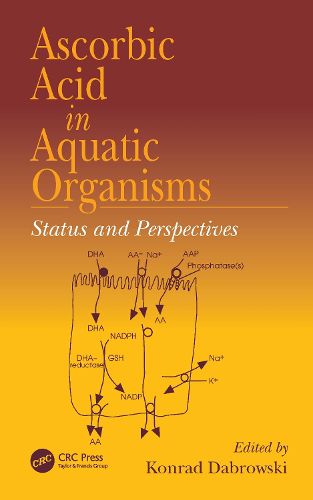Readings Newsletter
Become a Readings Member to make your shopping experience even easier.
Sign in or sign up for free!
You’re not far away from qualifying for FREE standard shipping within Australia
You’ve qualified for FREE standard shipping within Australia
The cart is loading…






We are just beginning to discover the importance of vitamin C in the health of natural and man-made ecosystems. Synthesis of ascorbic acid is well understood, but algae as the only source of ascorbate in the aquatic food pyramid has not been explored. There is an expanding field of the culture of aquatic organisms that demand formulated feeds to best meet their requirements for health, growth, and reproduction. With over 100 species now cultured for human consumption, the question arises as to whether we have reliable information for the dietary needs for vitamin C for even a small percentage of these organisms.
A comprehensive approach to the role of vitamin C at the cellular level as well as in the aquatic food chains, this book discusses growth and reproduction, disease resistance, and toxicology of aquatic organisms.
Ascorbic Acid in Aquatic Organisms was written as the offshoot of a special session on aquatic organisms and practical aquaculture at the 1998 World Aquaculture Society (WAS) meeting.
This book reviews the research already available and identifies new directions for research. It is a unique combination of good nutrition research, ecology, and practical aquaculture (for instance brine shrimp enrichment). This interdisciplinary volume will appeal to marine fish culturists, aquatic biologists, comparative and evolutionary cellular physiologists, and environmental toxicologists.
$9.00 standard shipping within Australia
FREE standard shipping within Australia for orders over $100.00
Express & International shipping calculated at checkout
We are just beginning to discover the importance of vitamin C in the health of natural and man-made ecosystems. Synthesis of ascorbic acid is well understood, but algae as the only source of ascorbate in the aquatic food pyramid has not been explored. There is an expanding field of the culture of aquatic organisms that demand formulated feeds to best meet their requirements for health, growth, and reproduction. With over 100 species now cultured for human consumption, the question arises as to whether we have reliable information for the dietary needs for vitamin C for even a small percentage of these organisms.
A comprehensive approach to the role of vitamin C at the cellular level as well as in the aquatic food chains, this book discusses growth and reproduction, disease resistance, and toxicology of aquatic organisms.
Ascorbic Acid in Aquatic Organisms was written as the offshoot of a special session on aquatic organisms and practical aquaculture at the 1998 World Aquaculture Society (WAS) meeting.
This book reviews the research already available and identifies new directions for research. It is a unique combination of good nutrition research, ecology, and practical aquaculture (for instance brine shrimp enrichment). This interdisciplinary volume will appeal to marine fish culturists, aquatic biologists, comparative and evolutionary cellular physiologists, and environmental toxicologists.